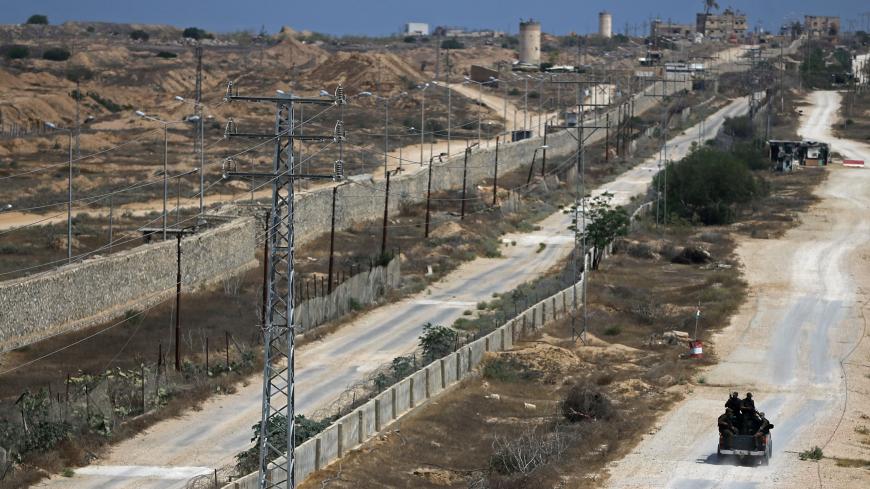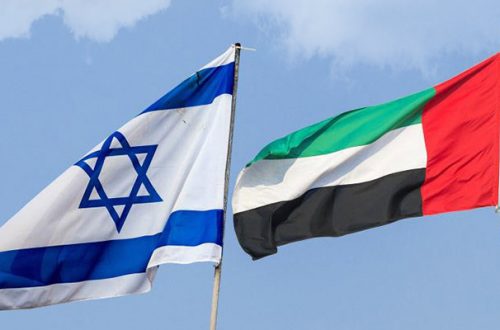By Harry Storm
Why a plan with the best chance of providing peace, prosperity and security for all parties will never see the light of day.
We live in an irrational world, and particularly so when it comes to the affairs of the Middle East. Protests against Israel erupt the day after 1,200 of its citizens are savagely butchered and hundreds taken hostage. Queers and feminists rally for Hamas. Top-ranked universities that demote and/or expel academics and students for even slightly deviating from unfounded orthodoxies about race and/or gender invoke freedom of speech arguments to rationalize anti-Jewish hate on campus.
So it’s hardly surprising that amid all the hand wringing about what to do about the war between Israel and Hamas and how to arrive at a permanent settlement between Palestinians and Israelis, one potential solution that offers a good chance for peace, prosperity and security for both peoples is never discussed and likely never will be: namely, returning the territories occupied by Israel to the countries that lost them the 1967 Six-Day War: Egypt and Jordan.
The reason why this potential solution is permanently off the table – even though it is precisely how so many conflicts have been resolved in the past – is that it is anathema to pretty much all the parties concerned: the Palestinians, many Israelis, other Arab and Muslim countries – notably including Jordan and especially Egypt – and the entire international community.
Since 1967, when Israel offered to return all occupied territories and received the “three No’s” in return from the Khartoum conference of Arab states – no peace with Israel, no recognition, no negotiation – the idea of returning land to Jordan and Egypt has been rejected out of hand. It became even more unattainable after 20 Arab countries at the 1974 Arab Summit in Rabat, Morocco recognized the Palestine Liberation Organization (which is now in charge of the Palestinian Authority) as the sole representative of the Palestinian people.
Still, a look at the positives – and negatives – of this rejected proposition is warranted, in part because (a) recent events have dramatically lessened the chance of agreement based on the two-state solution that the international community demands and the current Israeli government and Palestinian leadership pay lip service to; and (b) the other solution favoured by radicals on both sides –one state – is even less tethered to reality, as it would very possibly result in the destruction of one side or the other.
There are several major problems associated with the two-state solution that would be difficult if not impossible to overcome should such an agreement ever be forced upon the parties. The first is practical: Gaza and the West Bank are separated by Israel. Historically, states with unconnected parts don’t have a good track record. Germany went to war with Poland in 1939 in order to connect East Prussia to the rest of the country. That led to the Second World War.
Pakistan, the Muslim country carved out of British India, originally had two parts: East and West Pakistan. In 1970, East Pakistan rebelled and became the separate state of Bangladesh.
More recently, Both Azerbaijan and Armenia have – or in the case of Armenia – had – territories that are separated. The Nagorno-Karabakh region, populated mainly by Armenians but separated from the rest of the country by Azerbaijan, was the cause of many wars since the dissolution of the Soviet Union. Only in this past year did Azerbaijan finally settle the matter by seizing Nagoro-Karabakh and effectively annexing it.
Meanwhile, Azerbaijan also has an unconnected territory – Nakhchivan – that is separated from the rest of the country by Armenia. Armenia may harbour a desire to annex Nakhchivan as compensation for losing NK, but that could cause a war with Turkey, Azerbaijan and possibly even Iran that Armenia would almost certainly lose; meanwhile, Azerbaijan is itching to build a railroad from its territory to the enclave, and has support from Turkey and Iran to do so, though Armenia, whose territory that such a railroad would have to pass through, is, as one might expect, not too keen.
All this to say that nations whose territories are separated – especially by unfriendly or hostile states — tend not to be successful. Only Russia and the U.S. have managed to have relatively problem-free separated parts. Kaliningrad is separated from the rest of Russia by Poland and Lithuania as a result of the breakdown of the Soviet Union, and the fact that this seems to work can be attributed to Russia’s continuing – though diminishing — status as a world power. The U.S. is separated from its largest state – Alaska – and from two tiny enclaves by Canada, but as the two countries are friendly neighbours, this isn’t problematic.
That would almost certainly not be the case should a two-state solution be forced on two very unwilling Mideast “peace partners.” And a nascent Palestinian state in the West Bank and Gaza would likely also not be in control of its own borders and probably not even its own airspace (because Israel wouldn’t allow it).
Still, these practical considerations pale in comparison to the political fact that both sides, at present at least, oppose a two-state solution, despite occasionally paying lip service to the idea to please international benefactors. From the Israeli point of view, a two-state solution would return Israel to its pre-1967 borders, and that means a country that at its narrowest point would be only 13 kilometres (9 miles) wide, with the western portion of the West Bank within the sights of the Israeli city of Netanya.
Israelis worry their country could be cut in two by a military strike from the West Bank, and fear potential terror attacks so close to Israel’s main population centres should the Palestinian state come under control of extremists, something Israel deems likely, if not inevitable. After the events of Oct. 7, even the Palestinian Authority is no longer considered a potential peace partner, given its continuing anti-Israel propaganda and its paying of martyrs who commit terror attacks on Israeli Jews.
Furthermore, any two-state solution that grants Palestinians control of the West Bank would be strongly opposed by the religious right in Israel, which supports West Bank settlements that would almost certainly be dismantled (except in the Jewish Quarter of East Jerusalem and perhaps some neighbouring settlements). There have been suggestions that the settlements could remain under Palestinian rule, although it’s unlikely a Palestinian state would tolerate them; nor is it likely that many would choose to live under Palestinian rule.
From the Palestinian side, the two-state solution has been useful in garnering support from the international community for the Palestinian cause, but statements by Hamas and officials of the Palestinian Authority from time to time, have made it clear that there is little real interest in a two-state solution; What the Palestinian leadership has always desired is for the Jewish state to be gone, replaced by a Palestinian state “from the river to the sea,” i.e. the one-state solution favoured by many Israelis and Palestinians alike, albeit for the opposite reasons.
However, the one-state “solution” also has no chance, precisely because of those opposing factors. What Israelis who support one state envision is a Jewish-controlled country that would require a Jewish majority population in order to remain a democracy. Given the wildly disparate birthrates of Arabs and Jews (excepting the ultra-orthodox), maintaining a Jewish majority could only be achieved by expulsions and/or ethnic cleansing that would not be tolerated by the international community or by a majority inside Israel, and would likely lead to sanctions or worse.
The Palestinians, meanwhile, favour the one-state solution precisely because demography is on their side. Iran, whose foreign minister, Hossein Amir-Abdollahian, recently stated that the only thing Iran and Israel agree on, albeit for very different reasons, is the one-state solution. (Of course the Iranian minister also said that a referendum in such a single state could only be for residents descended from pre-1948 inhabitants, which would effectively turn Israel into another Arab state.)
A one-state solution would also mean the return of millions of Palestinian refugee descendants. Given that and the Palestinian birth rate, a single state would quickly have a Palestinian majority, putting an end to the world’s only Jewish state, which is precisely why Israel will never accept it.
Given the firm rejection of the one-state solution and the growing unlikelihood of a two-state solution, returning the territories to countries that previously occupied them (to little or no condemnation, let’s remember) makes a lot of sense. Both Egypt and Jordan have been at peace with Israel, a cold peace to be sure, but peace that has stood the test of time: 45 years for the treaty with Egypt, 30 years with Jordan.
Both sides would have much to gain from such an arrangement. For Israel, security concerns would lessen significantly, as the control of borders would be shared with the Egyptians and the Jordanians. For the Palestinians, it would mean an end to the hated Israeli occupation, which would be replaced by administrations from countries that share the same language, religion and, to a large extent, ethnicity.
And yet, this arrangement is a non-starter that is never even considered, despite the obvious benefits – improved security for Israel, a significant improvement in the quality of life for Palestinians – it would provide. Here’s why:
First, Egypt has no desire whatsoever to administer the Gaza Strip again, particularly a Gaza that has been “hamasified” for nearly 20 years. Hamas is the Palestinian branch of the Muslim Brotherhood, an extremist Muslim organization outlawed in Egypt and one which puts the fear of god (no pun intended) in the Egyptian ruling class, which has already had much experience with terrorism committed by Islamic extremists and with the Brotherhood running the government.
Similarly Jordan, which governed the West Bank until 1967, has no overt interest in regaining control of it. Then-King Hussein was effectively forced to relinquish Jordan’s claim to represent the Palestinians of the West Bank at the 1974 Rabat Summit. Jordan also has experience with extremism, having expelled the Black September faction of the PLO in 1970 after a failed uprising by the group.
Second, the international community – including moderate Arab countries that have signed peace deals with Israel — have become so wedded to the idea of a Palestinian nation that they cannot envision a settlement without one. Additionally, the two-state solution has become something of a sacred cow (especially in the Western world), with the creation of a Palestinian state being a sine qua non, an essential condition to any peace settlement, even though it’s patently unworkable for the foreseeable future.
Third, the Palestinians, having developed a real sense of national identity since 1948, would almost certainly reject this proposal, even if it would significantly improve their quality of life. After all, they’ve rejected every offer by Israel that would give them a state of their own (i.e. the two-state solution), without even making a counteroffer.
Fourth, such a proposal would face severe opposition from some Islamic countries – notably Iran but likely also Turkey under Erdogan and the remaining Arab countries still in the rejectionist camp, such as Syria, Iraq, and Hezbollah-controlled Lebanon, which continue to advocate for a one-state solution that would have the Palestinians in control of the entire area “from the river to the sea.”
Some of these problems are surmountable. Jordan and even Egypt could be persuaded to resume control of their respective territories given the right incentives. In Jordan’s case, given that so many Jordanians are of Palestinian origin (estimates vary as to the percentage, but it could be as high as 50% or more), integrating the West Bank would not be particularly difficult, especially if enough cash is provided by the international community to grease the deal.
Egypt would be a more difficult nut to crack, but given that government’s chronic need for cash, it might be possible to entice that government to resume its control of the strip if the financial incentives were great enough. This would require significant generosity from the U.S., EU, and wealthy Arab countries, and likely from Israel as well.
It is conceivable, were Egypt and Jordan to covertly signal a willingness to resume control of the territories given the right incentives, that the international powers that be could be persuaded that this admittedly imperfect solution might be preferable to the increasingly untenable status quo. The Palestinians (and many Israelis) could be forced to accept a fait accompli, kicking and screaming if necessary. And the rejectionist countries and factions could be ignored if the countries involved, including the U.S. and EU, prepare themselves for the inevitable burst of terrorism that would come from that camp.
None of this is to say that such a proposal is perfect or even close to it. It doesn’t account for the millions of descendants of Palestinian refugees of 1948 who, for reasons only the UN could dream up, are still considered refugees, or the determination among many Israelis to retain control of the Judea and Samaria (i.e. the West Bank) for historical and religious reasons and security concerns.
Nor does it take into account the status of East Jerusalem, including the Jewish quarter and the Temple Mount. Israel would be loathe to cede control of all or part of East Jerusalem, whereas Jordan would almost certainly demand its return. (With regard to the Temple Mount, the 1994 peace treaty between Israel and Jordan stipulated that Israel maintains overall security control of the Temple Mount, whereas the Islamic Waqf in Jerusalem, which is part of the Jordanian Ministry of Awqaf and Islamic Affairs, is responsible for day-to-day management and maintenance of the site.)
And Israelis and Palestinians would have to make serious sacrifices. The Palestinians would be required to give up their dream of an independent Palestine from the river to the sea; Israel would once again be only 13 km across at its narrowest point; and Israeli settlers would likely lose the right to continue living in Judea and Samaria. It is possible that some Jewish settlers might want to continue to live in the West Bank under Jordanian sovereignty, but given that Jordan has exactly 0 Jews – and yet has never been accused of being an apartheid state – it’s unlikely that Jewish settlements would be permitted (other than those retained by Israel in any such settlement, such as those near Jerusalem).
So admittedly, this solution is far from perfect. It is, however, more viable than the two-state solution since both parties effectively, if not officially, reject it (and Israel even more so since Oct.7). It also makes a lot more sense than the one-state solution favoured by extremists on both sides, which would almost certainly involve the elimination of one side or the other, since the idea that both sides can live together in a single state is little more than a pipe dream.
Given all the posturing around these issues by all parties for the past half century, it isn’t particularly surprising that a proposal with a much better chance of success – however limited – than the one- or two-state solutions will likely never even be spoken of publicly, let alone be on the table for consideration. But it is unfortunate.





